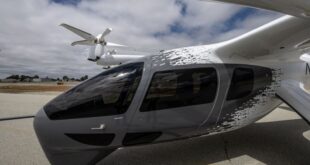PARIS (Reuters) – Europe’s Ariane 6 rocket was set to blast off for the first time on Tuesday, ending a year-long hiatus in the continent’s autonomous access to space after a last-minute data glitch.
The rocket’s nearly three-hour inaugural mission will not be a commercial flight but will carry satellites and experiments from European agencies, companies and universities.
Pictures released by the European Space Agency showed the 56-metre rocket sitting on its launchpad in French Guiana, where the agency described the latest weather report as “green”.
“It looks very good. We have moderate risk of thunderstorms, but it’s getting better going into the (launch) window. So weather should not be a problem today,” Toni Tolker-Nielsen, ESA’s acting director of space transportation, told Reuters from the control room at Europe’s equatorial space port.
The rocket was officially scheduled to lift off during a four-hour launch window starting at 3:00 p.m. (1800 GMT). The space agency said routine checks had shown a “small issue” in a data acquisition system, so the first hour of the launch window was lost and the earliest lift-off would be at 1900 GMT.
“This is just the first step, we have lots of work to do yet, but we are laser-focused on changing the future of the European space transportation ecosystem,” ESA Director General Josef Aschbacher said on X.
Ariane 6 was developed at an estimated cost of 4 billion euros by ArianeGroup, co-owned by Airbus and Safran, and its arrival, originally due in 2020, has been repeatedly delayed.
Since the agency retired its workhorse Ariane 5 rocket more than a year ago, Europe has had no independent means of sending its satellites into space, while war in Ukraine has cut Western ties to Russian Soyuz rockets and Italy’s Vega C is grounded.
A new generation of small European commercial launchers remains in early development mode.
Aschbacher has said the vacuum in Europe’s access to space has been a major setback, with European agencies forced to hitch a ride with the Falcon 9 rockets of Elon Musk’s rival SpaceX in the United States.
ESA’s 22 nations agreed in 2014 to develop two versions of Ariane 6 in the face of growing competition led by SpaceX.
The United States and dozens of other countries have come to rely heavily on Falcon 9 for reaching orbit as everyday life on Earth becomes increasingly reliant on satellite links and data.
If all goes well with its debut, the launcher has about 30 customer missions to launch over the next several years.
That includes 18 launches for Amazon’s Kuiper internet constellation of thousands of satellites, one of a few planned rivals to SpaceX’s Starlink.
If Tuesday’s launch is postponed, ESA has set itself an initial window for further launch attempts until July 31.
(Reporting by Tim Hepher, Joey Roulette; Editing by Bernadette Baum)
 BeritaKini.biz Berita Viral Terkini di Malaysia
BeritaKini.biz Berita Viral Terkini di Malaysia





